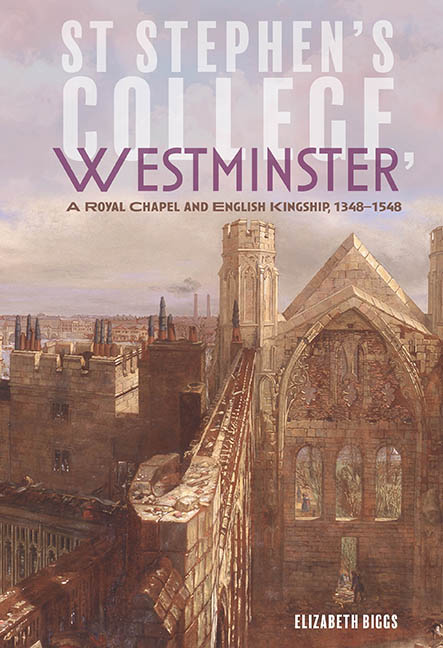Book contents
- Frontmatter
- Contents
- List of Illustrations
- Acknowledgements
- List of Abbreviations
- Preface
- Introduction
- 1 Finding a Place Within Westminster, 1348–1394
- 2 Magnificence and Difficulties under Richard II, 1377–1399
- 3 Weathering Political and Economic Storms, 1399–1485
- 4 A New Kind of Court? Display, Pageantry and Worship, 1471–1536
- 5 Responding to the Reformation, 1527–1548
- Conclusions
- Bibliography
- Index
- Miscellaneous Endmatter
4 - A New Kind of Court? Display, Pageantry and Worship, 1471–1536
Published online by Cambridge University Press: 28 April 2020
- Frontmatter
- Contents
- List of Illustrations
- Acknowledgements
- List of Abbreviations
- Preface
- Introduction
- 1 Finding a Place Within Westminster, 1348–1394
- 2 Magnificence and Difficulties under Richard II, 1377–1399
- 3 Weathering Political and Economic Storms, 1399–1485
- 4 A New Kind of Court? Display, Pageantry and Worship, 1471–1536
- 5 Responding to the Reformation, 1527–1548
- Conclusions
- Bibliography
- Index
- Miscellaneous Endmatter
Summary
With as much pomp as ever … at Westminster’ was how the Master of the Rolls, John Taylor, described Henry VIII's entrance into Lille in 1513. Fifty years earlier, Burgundian visitors had noted Edward IV's court as ‘the most splendid court that could be found in all Christendom’. The ways in which the court – its materiality, its personalities and its structures – influenced the display of kingship has come to be a fruitful avenue of study for historians ever since David Starkey challenged Geoffrey Elton's view that the court was a sideshow to the real work of political life in administration and Parliament in the later fifteenth and early sixteenth centuries. The politics of access to the king's person has increasingly become a key theme in court studies and studies of political power. This work on access has often focused on those who sought favour through their ability to personally intercede with the king. The concept, however, is useful on a wider level as some level of general access was necessary for audiences to see the king and his court. For my purposes in this chapter, I have taken the court as those around the king, his household, visiting great nobles with their own staff, and the part of royal administration that moved with the king through the Thames Valley between his various residences. This chapter examines a period in which the records of the household became more abundant and the kings of England issued new versions of the regulations for their households, which formed the core of the court, particularly the Black Book of the Household of 1471 and the Eltham Ordinances of 1526. This period also saw the personal preferences of Henry VII and Henry VIII alter the usages of the Palace of Westminster from royal residence to primarily a place of administration, the law and politics, which was solidified in 1536, when Whitehall was formally joined to the old Palace of Westminster. Against this backdrop of palatial change, the chapter explores how the canons of St Stephen's came to have a new cloister c.1515–1527, and continued to interact with the king, his household and visitors to the palace.
- Type
- Chapter
- Information
- St Stephen s College WestminsterA Royal Chapel and English Kingship, 1348–1548, pp. 137 - 181Publisher: Boydell & BrewerPrint publication year: 2020



